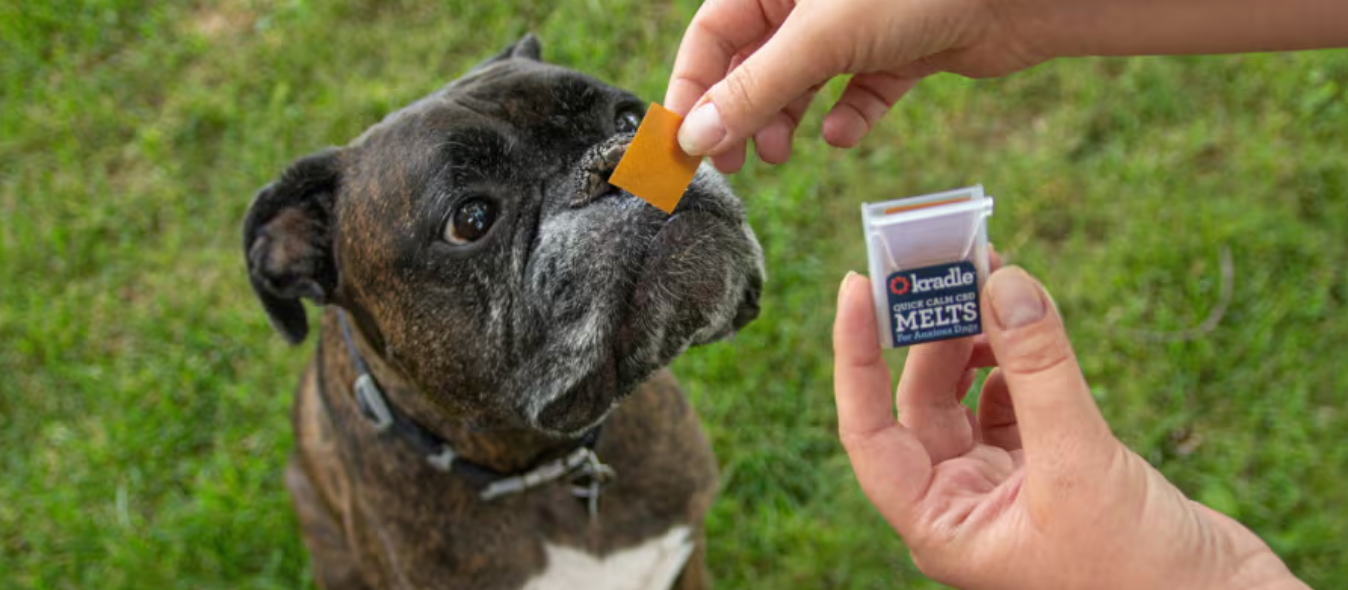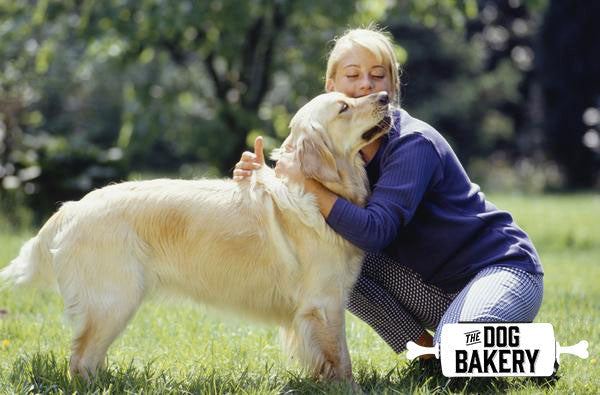
Did you know: May 3rd is National Specially-abled Pets Day(formerly Disabled Pets Day)? Now here’s a holiday we can get behind! Specially-abled Pets Day celebrates these amazing and heroic animals, helps to educate the public about caring for disabled pets and finds homes for orphaned, specially-abled pets. Founded in 2006 and internationally embraced, the decision was made to change the original name when founder Colleen Paige felt that it just didn't fit. "The name held too negative a connotation... because these pets are very able! Pets that become challenged due to disease, birth flaws or injuries, tend to develop greater senses than your average pet. Most of the time it's as if they never had to readjust to life… and we need to keep up with them!" Celebrated on May 3rd annually, National Specially-abled Pets Day encourages adoption always and hopes that people who would like to bring a new furry family member home will consider a specially-abled pet.
A PetFinder poll found special needs pets are the third-hardest animals to place, behind senior pets and bully breeds. Many of these “less adoptable” pets spend up to two years waiting for a forever home, more than four times the average wait. This is just part of why we always condone adoption over buying here at Dog for Dog, and today we’d like to talk about the advantages and key points of adopting a specially-abled dog. This is, of course, beyond the very obvious point that choosing to adopt a dog with special needs in many cases means saving the life of that dog or at the very least (if they’re coming from rescue), means that you’re taking on an amazing task that few would even consider facing. Special needs can encompass various disabilities, chronic medical conditions and behavioral issues. Some common problems among cats and dogs include missing one or more limbs, hind limb paralysis, deafness and or blindness, diabetes, allergies, urinary tract infections and lack of socialization. Some pets might require diapers, ramps, support slings, regular medication, and dog training and/or pet socialization classes.
One set of limited skills can bring out a whole new set of advantages. Pamela Nakamura wasn’t necessarily looking to adopt a special needs pet when she came across a beautiful yellow Lab named Max two years ago. “I knew from his photo that he was missing an eye,” says Pamela. “I didn’t want him to get passed by and I really wanted to give him a good home.” While Max is a little clumsier than your average dog (he has a tendency to bump into fences and walls) he has surprising mouth-eye coordination that makes him excellent at playing fetch, says Pamela. Learning to walk him was a little awkward in the beginning. However, she quickly learned if she keeps him on her right side that she’s within his eyesight and he feels safe and content. Overall, the past two years with Max has been really positive and Pamela says she wouldn’t hesitate adopting a special needs pet again.
Consider the commitment. Rochelle Michalek, the executive director of Paws Chicago, a no-kill shelter that rescues and adopts out injured and healthy pets in the Windy City, says that “Animals with disabilities are incredibly adaptable and despite their injuries can still be functional and even find a way to play. We put animals in homes where there is a commitment to succeed. People who adopt disabled pets ought to be of the proactive set. The environment at home has got to meet the needs of the pet and owners have to be committed to providing exercise, stimulation and training when necessary. Paw’s philosophy is one of education. We really talk about the cost of medical care so people in tricky financial situations know what they are taking on.” Her rescue also offers foster-to-adopt setups, where potential adopters can take their new bud home for a few weeks to make sure the new situation is one that works for both the pup and their human counterpart.
Stay open minded. In “The Power of Three Legs,” co-founder of Best Friends Animal Society Faith Maloney says that nowadays disabled animals are often the first to be adopted at the shelter. “It wasn’t long ago that any animal coming into a shelter with a defect – be it three legs or one eye – was considered unadoptable and automatically destroyed,” says Maloney. “But just as there are trends for certain breeds of pets, the trend now in adoptions is toward animals that come with publicity attached or with readily apparent war wounds.” This isn’t necessary a good thing – with the rise of so many “animal celebrities,” shelters are often overwhelmed with adoption requests for a few pets at the expense of many others. While this publicity can be a boon for the pet in question, there’s only one available for adoption; many potential adopters will leave empty-handed without considering other animals.
Blindness in a pet doesn’t mean you’ll have to hawkeye them 24/7. Actually, blind cats and dogs are no different than other animals! A blind pet doesn’t know what blindness is or that he or she has it, so they act like a regular dog or cat. “Blind cats can do pretty much everything that a seeing cat can do,” says Blind Cat Rescue, a permanent housing sanctuary in North Carolina. “They can climb trees, climb up on top of cabinets and get into places that you cannot figure out how they did it.” When caring for a blind pet, it’s important to maintain a consistent household. This means keeping food and water bowls, litter boxes and furniture in the same spots; blind pets navigate using their other senses, so moving things can confuse them. Dog trainer Cesar Millan recommends blocking off dangerous areas like stairs or pools with a baby gate, and laying down carpet runners or creating a “sniff path” of air fresheners on your pet’s regular route.
Deaf dogs are still totally trainable. Many animal shelters initially can’t tell if a pet is deaf; they look and act just like a regular pup – because they are. While many deaf dogs are easily started even by the lightest touch, with regular training they can be desensitized. “Deaf dog owners do take special measures to alert the dog to their presence before walking up to, or touching the dog,” says the Deaf Dog Education and Action Fund. A vibrating or “vibe” collar is used to train deaf dogs in a way similar to clicker training. Because dogs rely more on visual cues and body language than spoken words – they don’t understand English, after all – training a deaf dog is no more difficult than with a regular pup. One pet parent even made news for teaching her deaf Great Dane American Sign Language and many trainers teach their hearing dogs ASL commands as well.
Tripawds have an extra zest for life, in case you didn’t already know! While it’s true an animal amputee won’t be winning any races, the majority of dogs and cats get along just fine on three legs. Many report their three-legged pets are particularly spunky. Tripawds, a community for pet parents of three-legged animals, encourages strengthening your dog’s abdominal core muscles to compensate for missing limbs, rather than excessive walks or runs. Many tripawd dogs wear a special harness that allows for easy maneuvering of stairs and cars, while others can provide extra support. The location of the missing limb can make initial recovery difficult for some pets. “The front leg accounts for approximately 70 percent of the dog’s strength and balance,” says Seattle pet hydrotherapist Sheila Wells. “That is why front-leg amputees often have a more difficult time adjusting to their new state. The rear can follow but the front has to lead.” In any case, there's no need for a long face when you spot a three-legged doggie!
Inspired and obsessed yet? Check out these six heroic special needs animals and check out the official website of NSAPD for a list of blogs all about special needs animals. In the comments below, tell us about your special needs pet or a favorite one you’ve met!
Here's a video of our friend @underbiteunite on Instagram
“All too often I think Specially-abled Pets are overlooked because people are worried it will cost too much money to care for them or that it'll just take too much work. That is not the case. Most animals, especially those that are blind in one eye or missing a leg, do just as well as if they had no issues at all. Dogs in wheelchairs can run around chasing balls, playing with other dogs and romping through water. Even totally blind animals can chase toys by sniffing them out. Animals are so resilient. They just need a chance to show us what courageous little heroes they are!" - Colleen Paige






